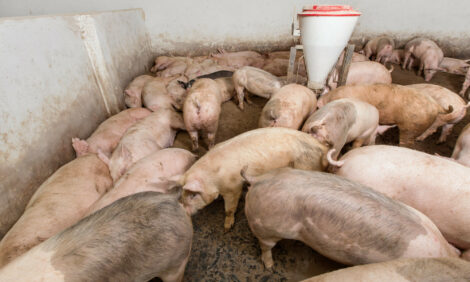



Leman Conf: ASF outbreaks in the Dominican Republic
African swine fever caused a 21% decrease in pig productionEditor's note: The following is from two presentations during the 2024 Leman Swine Conference.
Rachel Schambow and colleagues from the University of Minnesota, and USDA Animal Plant Health Inspection Service (USDA: APHIS) evaluated the African swine fever (ASF) outbreaks in the Dominican Republic (DR) from 2022 to 2024.
In the DR, ASF has caused significant negative consequences for the country’s swine industry since its reintroduction in July 2021. Production was estimated to have decreased by 21% in 2022 because of the epidemic. Numerous control efforts have been applied to manage ASF, such as development of laboratory capacity, surveillance, depopulation of affected herds, and compensation for affected producers.
Data were made available from November 2022 to March 2024 by APHIS and the Ministry of Agriculture of the DR from three surveillance sources: 1) passively reported outbreaks beginning from November 2022, 2) a government-mandated active surveillance program requiring that commercial farms with 25 or more pigs to submit samples every 21 days, instituted in March 2023, and 3) a government led active surveillance program of backyard farms implemented in September 2023 that is still ongoing.
In total, there were 329 reported outbreaks from November 2022 to March 2024. The majority of these were detected through passive surveillance and were from backyard farms.
No positive cases were detected from the mandated 21-day sampling of commercial farms. Attack rates were highest in the Northwest (18.11% in one Northwestern province) and were 6.09% or lower in the remaining provinces. Two provinces in the Central and Northcentral regions had no positive reports from January 2023 to March 2024. The reproductive ratio was close to 1 (median=1.06, 95% probability interval (1.03-1.08) at the end of the study period.
This is consistent with the decrease in the reported positive rate over time from public reports (over 40% in early 2022 to 10.5% in early 2023) and then estimated at 2.45% from January 2023 to March 2024. Nearly three years after the reintroduction of ASF to the DR, these results may suggest the need to change from an approach of emergency response to one of sustained and progressive control. A progressive control plan that builds regulatory and private industry capacity may support reduction of ASF risk over time and eventual eradication.
Clinical manifestation of ASF
Laura Alarcón and colleagues at the University of Minnesota, USDA: APHIS and private practitioners, characterized epidemiological and clinical outbreaks of ASF in pig farms in the DR.
Clinical and epidemiological data were collected from eleven commercial pig farms (230 to 810 sows in production, 9 farrow-to-finish and 2 multi-site) located in the DR that experienced ASF outbreaks between May 2021 and December 2022. Data was collected by veterinarians at the time of the in-person visit to the affected farms and for the following 7 days, when typically, suspect cases were confirmed, and farms were depopulated.
The disease affected only sows on most farms, but one farm had 8 piglets of 42 days of age dying within 3 days. The average cumulative mortality of sows on the 7th day was 0.052 (min: 0.017, Q1: 0.032, median: 0.05, Q3: 0.074, max: 0.082) and morbidity was 0.6 (min: 0.03, Q1: 0.35, median: 0.65, Q3: 0.924, max: 0.98).
Daily sow mortality during the first week ranged between 0.004 and 0.091. Two farms had 2 abortions the day before the visit, and in another farm, sows had hemorrhages after the application of injectable drugs 7 days before appearance of signs, additionally 1 abortion and depression were observed.
ASF-unspecific clinical signs observed included depression (mean: 0.23, SD: 0.08), loss of appetite (mean: 0.28, SD: 0.11), inactivity (mean: 0.099, SD: 0.05).
ASF-specific clinical signs included fever (mean: 0.055, SD: 0.042), abortion (mean: 0.045, SD: 0.020), dyspnea (mean: 0.039, SD: 0.012), return to estrus (mean: 0.028, SD: 0.021), purple marks on the ears (mean: 0.019, SD: 0.012), cutaneous cyanosis/hyperemia (mean: 0.016, SD :0.020), diarrhea (mean: 0.015, SD: 0.012) and nasal hemorrhaging (mean: 0.001, SD:0.004). No vomiting was observed.
Multivariable analysis resulted in the identification of three significant types of ASF clinical presentation, namely, (1) 4 farms were characterized by diarrhea, fever, cutaneous cyanosis-hyperemia and loss of appetite, (2) 3 farms were characterized by presence of return of estrus and depression, and (3) 4 farms were characterized by abortion, inactivity, purple marks on the ears and nasal hemorrhaging.
Clinical presentation patterns of AFS help recognize early signs of disease in affected farms. The goal is to support the design of surveillance and control activities in affected and free regions.









